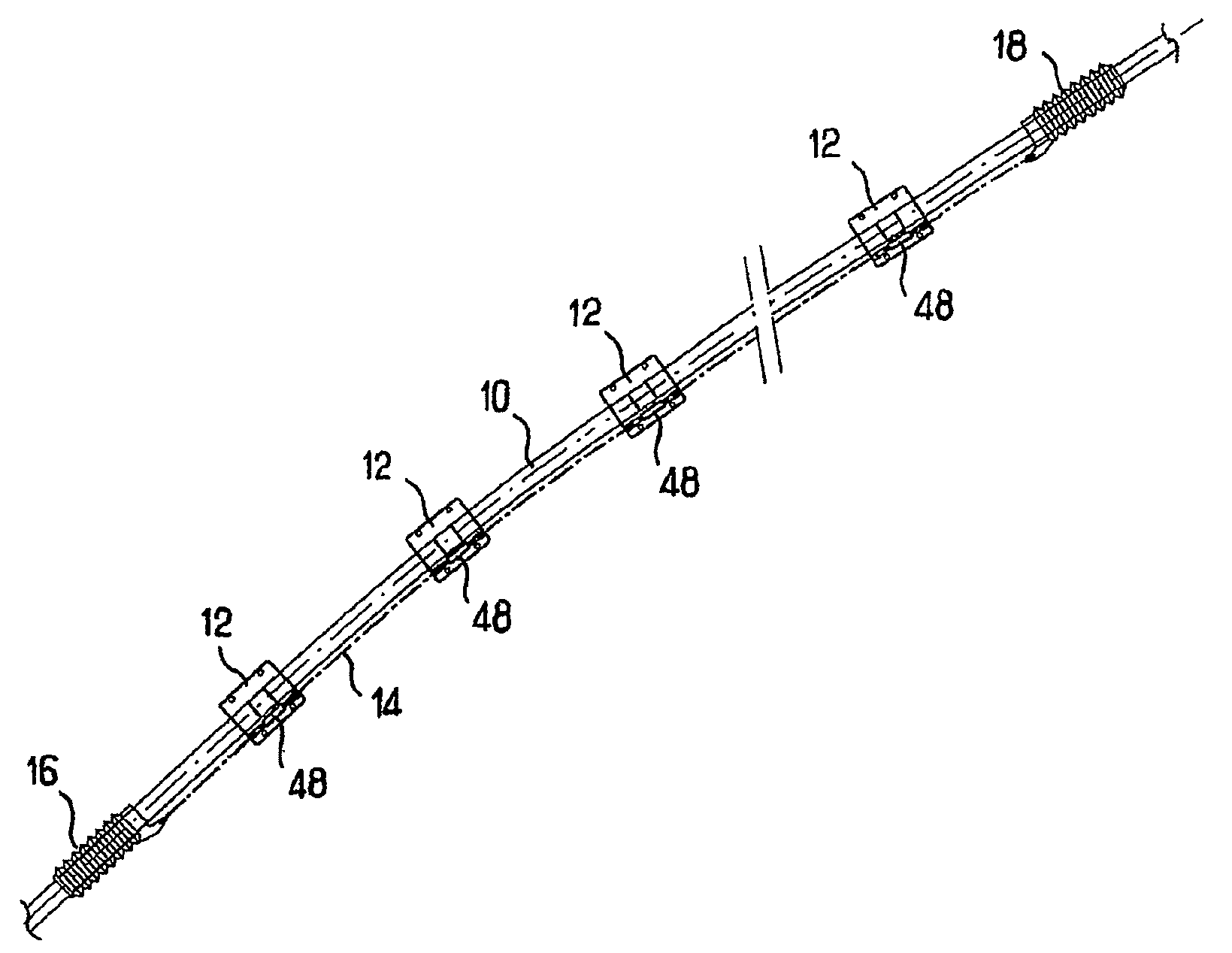Assembly of buoys for flexible submarine pipe
a technology of flexible submarine pipes and buoys, which is applied in the installation of cables on floats, waterborne vessel navigational aids, special-purpose vessels, etc., can solve the problems of fragility of the surface layers of the submarine pipe, the submerged pipe is subject to considerable tensile forces, etc., and achieves more effective sustentation efforts, longer downtime, and more effective locking
- Summary
- Abstract
- Description
- Claims
- Application Information
AI Technical Summary
Benefits of technology
Problems solved by technology
Method used
Image
Examples
Embodiment Construction
[0022]FIG. 1 depicts a section of flexible submarine pipe 10, intentionally truncated, which is adapted to extend between a sea floor installation and a surface installation that are not illustrated here. This section of submarine pipe 10 is equipped with a set of buoys or floaters 12. Four are shown in FIG. 1 in the interests of the clarity of the drawing, although they are considerably more numerous in reality. As explained in further detail below, each of the buoys or floaters 12 surrounds the pipe 10. The floaters are connected together successively by hitching line 14, for example in the form of a cable. This hitching line 14 is maintained extended along the pipe 10 due to the presence of two clamps 16, 18 locked in the translational sense on the pipe 10 to either side of the set of buoys or floaters 12.
[0023]Each buoy or floater 12 is connected in the translational sense to the hitching line 14, which itself is maintained in a fixed position along the pipe 10. The buoys or flo...
PUM
 Login to View More
Login to View More Abstract
Description
Claims
Application Information
 Login to View More
Login to View More - R&D
- Intellectual Property
- Life Sciences
- Materials
- Tech Scout
- Unparalleled Data Quality
- Higher Quality Content
- 60% Fewer Hallucinations
Browse by: Latest US Patents, China's latest patents, Technical Efficacy Thesaurus, Application Domain, Technology Topic, Popular Technical Reports.
© 2025 PatSnap. All rights reserved.Legal|Privacy policy|Modern Slavery Act Transparency Statement|Sitemap|About US| Contact US: help@patsnap.com


